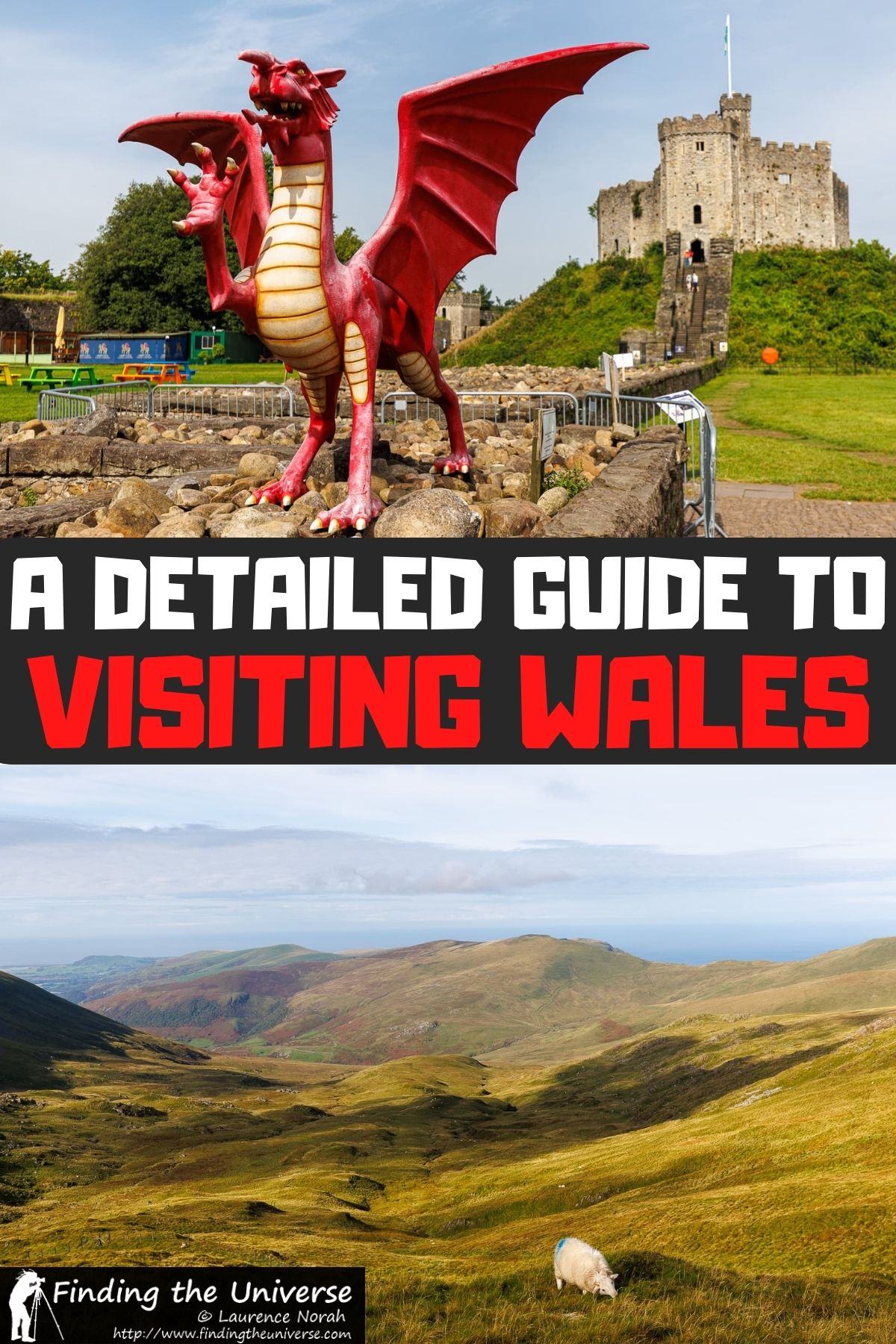If you’re planning a trip to Wales, then you’ve come to the right place! In this guide we’re going to share everything you need to know to plan the perfect Wales trip. This is based on our experiences of traveling in Wales and also my time living in Wales, which I did for many years. I was actually born in Wales!
In this post, we’ll cover the best times of year to visit Wales, highlights not to miss, how to get around Wales, where to stay in Wales, what to eat in Wales, how to book tours, and many more tips to help you plan the perfect Wales adventure.
We’d suggest reading this guide alongside our detailed Wales road trip itinerary, which will give you more ideas of a specific itinerary and sights to see.
Let’s start with an overview of Wales.
A Quick Overview of Wales
Wales is a country with a population of around three million people. It is part of the Island of Great Britain along with England and Scotland. It is one of the four countries (along with England, Scotland, and Northern Ireland) that make up the United Kingdom.
Geographically, Wales borders England along its entire east coast, from around Chester in the north down to near Bristol in the south. The rest of the countries border is made up of stunning coastline, mostly along the Irish Sea.
The history of Wales is fairly complex. People have been living here for hundreds of thousands of years, with continuous habitation for at least 9,000 years. Since the Roman times, many battles were fought between the Welsh and the English as each side fought for control over what is present day Wales.
One of the side effects of all these wars is that Wales now has a huge amount of castles you can visit which is great as a tourist. There’s also a lot of fascinating history and culture which is unique to Wales.
Back to the present, and modern-day Wales exists as its own country with its own language (Welsh) and, since 1999, its own parliament. However, there are no border controls or anything like that when traveling from England to Wales (they are both part of the UK), and English is also of course the most widely spoken language.
If you are not that familiar with the history of Wales, we can highly recommend reading a book on Welsh history before or during your visit. This will not only help you better understand many of the places you are likely to visit in Wales (e.g., castles, museums, churches, Iron Age ruins), but it will also help you better understand the modern culture and politics in Wales.
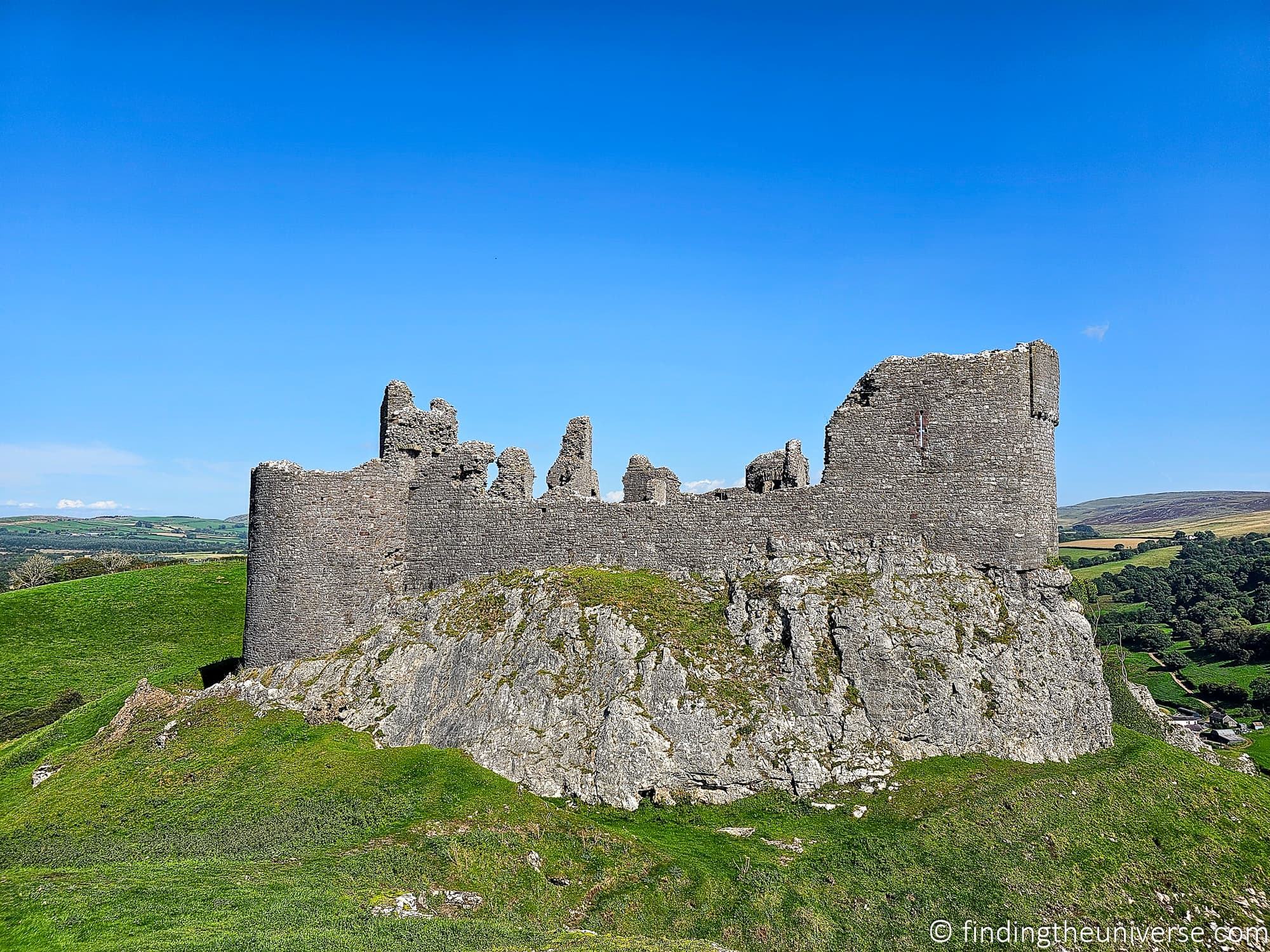

What is there to see in Wales?
There is a lot to see in Wales, something really for everyone.
To start with, with so much history spanning thousands of years, Wales has a huge amount of cultural attractions.
From iron age burial chambers to fascinating museums to unique cultural events like the Eisteddfodd, there really is a huge amount to choose from.
Of course, the first thing that likely springs to mind when you think of Wales are the castles, a side effect of all the various wars over the years. Wales has a huge number of castles, including a number of UNESCO listed medieval castles.
In fact, Wales has more castles per square mile than any other country in Europe! Suffice to say, if you like exploring castles as much as we do, Wales has no shortage to offer you.
If you do plan on seeing a lot of castles, then we can highly recommend picking up a Cadw pass. This includes access to a huge number of historic sites in Wales, including most the castles.
You can buy this online here, or in person at most Cadw sites. We found this saved us a lot of money on our most recent trips.
Lovers of the outdoors, like us, will also find plenty to do in Wales. There’s a huge amount of natural landscapes to explore, from stunning coastal scenery to beautiful hills and mountains. It’s perfect for hikers of all abilities. So whether you prefer to wander along a lovely bit of beach or climb to the top of a mountain, Wales has you covered.
Speaking of beaches, with so much coastline, as you might imagine there are plenty of beaches to choose from. These run the full gamut, from beautiful sandy stretches to those covered in pebbles. So if you’re after a good swim or just a nice walk on the beach, there are lots of options for you.
All that lovely outdoors space also means Wales is a great destination for wildlife. The variety in landscape and habitat means there’s a lot of different bird species you can spot, and there are various nature preserves you can visit where you can spot various types of bird and learn about them.
It’s more than just birds of course, with viewing opportunities for all kinds of wildlife, from seals and other marine life through to mammals, reptiles, and more!
Finally, Wales is also a great destination for lovers of mythology. This should be obvious from the flag, which is emblazoned with a red dragon, arguably the world’s coolest flag. Naturally, you can learn all about the mythology of Wales, from the origin story of King Arthur through to dragons and druids.
Overall, we think it’s fair to say that Wales is not a destination where you will run out of things to do!
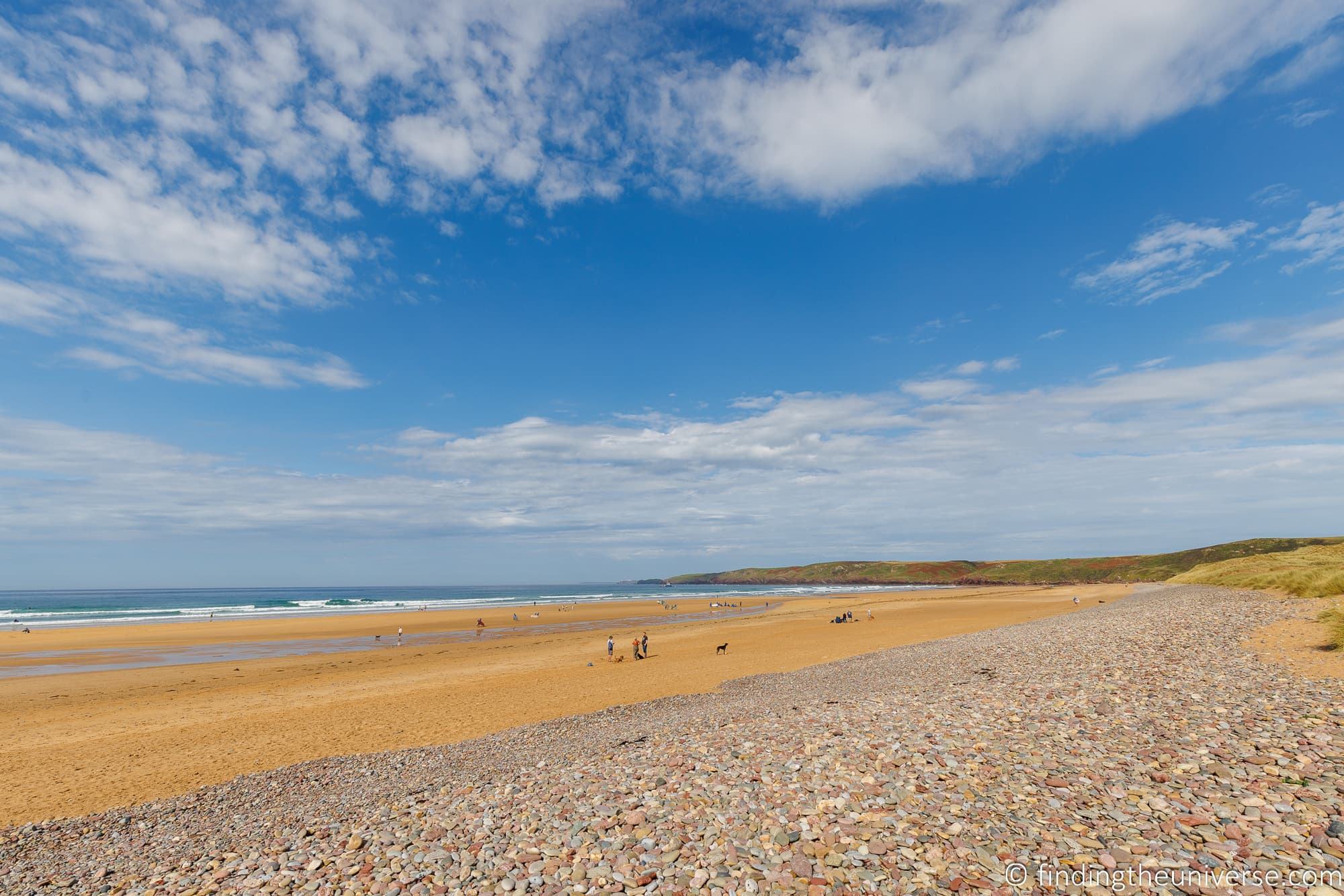

Some Basic Information for Traveling in Wales
Let’s cover some basic information for traveling in Wales.
Wales and the wider UK
Wales is a part of the United Kingdom (UK), so once you have entered the UK then you can travel in and out of Wales freely.
If Wales is your first point of entry into the UK (such as if you arrive into Cardiff Airport from outside the UK), then you would need to go through passport control and have the correct visa and any necessary documentation.
You can see more information on any required visas for your visit on the UK government website here or from your own government’s official travel website.
If you arrive into another part of the UK such as England or Scotland, then you don’t need to go through any further controls when you travel to Wales, be that by car, train, or plane.
Getting to and from Wales
Wales is an easy country to get to. In terms of flights, the only commercial airport in Wales is Cardiff airport, which offers both local and international flights to a limited number of destinations.
Wales is also well served by regional transport connections from the UK. By train, Cardiff is around 2.5 hours from London, 50 minutes from Bristol, and 4 hours from Liverpool.
North Wales destinations like Conwy are around an hour by train from Chester, or 3.5 hours from London.
You can also easily drive to Wales from locations around the UK. It’s around 3 hours by car to from London to Cardiff, 4 hours from Liverpool to Cardiff and 7 hours to Cardiff from Edinburgh.
Wales is also served by ferry routes which link Wales with the Republic of Ireland. So if you are doing a trip like our two week UK itinerary, this would let you connect between Wales and the Republic of Ireland.
There are also multiple tours that include Wales, departing from locations such as London or Bristol. More on tours later on in this guide. Suffice to say, you have plenty of options for getting to and from Wales!
Language in Wales
Wales has two official languages: Welsh and English. Just under 20% of the population of Wales speaks Welsh, but pretty much everyone also speaks English.
However you will almost certainly hear Welsh being spoken during your visit.
The main way you will encounter Welsh as a visitor is likely to be on signs. Most signs are provided in both Welsh and English. Place names are also nearly always written in Welsh.
Welsh is a pretty challenging language to learn and the pronunciation is definitely not always obvious! Place names can easily trip visitors up, although the good news is that most Welsh people are pretty used to it.
If you’d like to improve your pronunciation, this is a good starter guide. A good guide book to Wales should also include a guide to pronunciation.
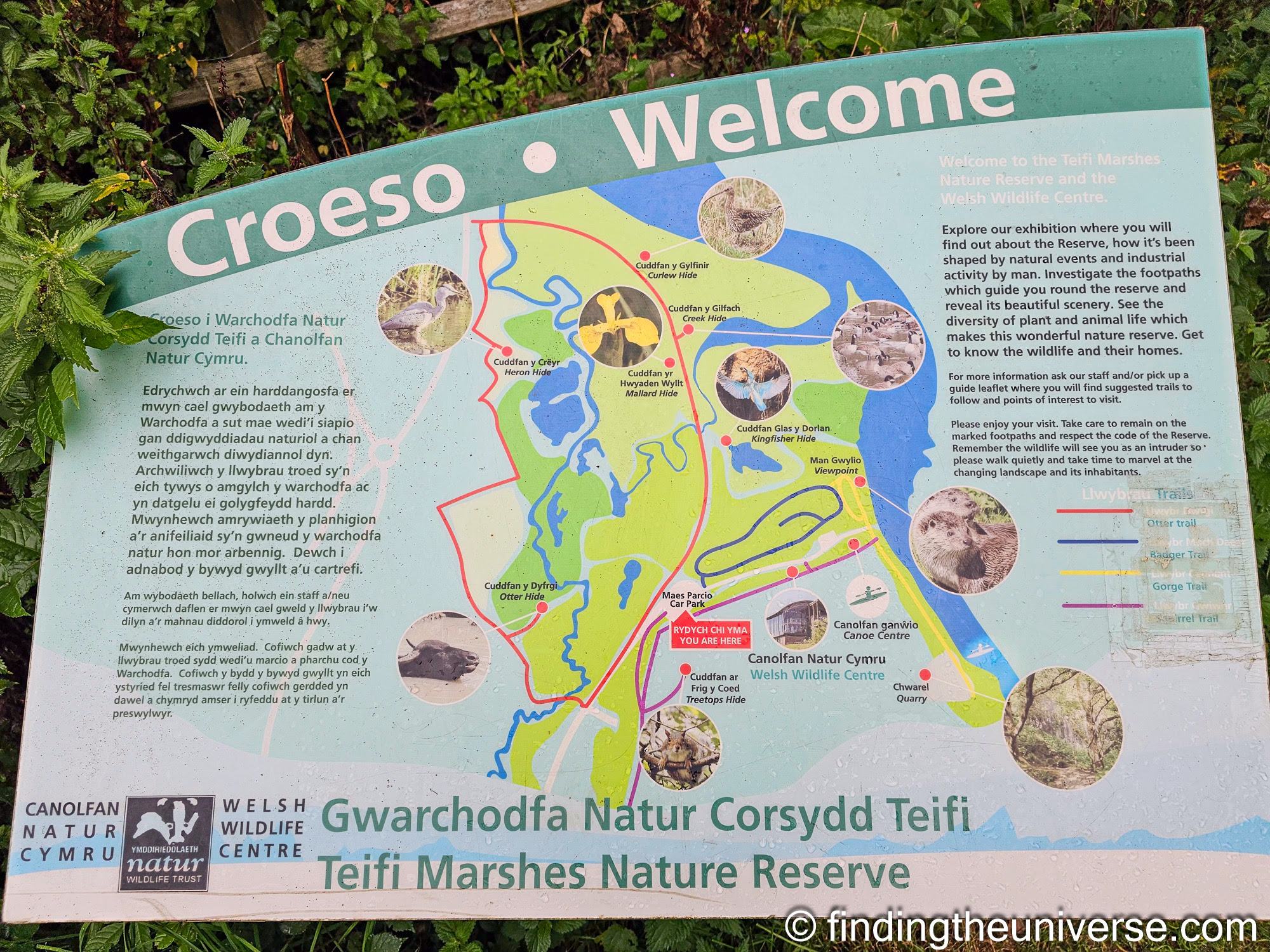

Driving in Wales
Driving in Wales is the same as driving in the rest of the UK, with the main difference being that the majority of the road signs are in Welsh as well as English.
If you drive in Wales, you will quickly learn some Welsh words from the road signs, particularly “Araf” which means “Slow”. In the majority of cases though, signs will be in both English and Welsh.
Other than that, driving in Wales is the same as driving in the rest of the UK. Drive on the left of the road and be sure to observe all speed limits and road rules. Speed limits are normally posted, with the national limit at 60 miles per hour and limits for built-up areas normally 20 to 40 miles per hour. You can see more tips in my guide to driving in the UK.
If you are renting a car (compare prices here), you can drive the car between England and Wales without any issues.
Be aware that the majority of cars in the UK use a manual transmission, so be sure to specify an automatic if that is what you are used to driving. Just note that these do normally carry a price premium as they are not as common.
Depending on where in the world you are visiting from and the language your license is in, you may also need an international driver’s license from the country which issues your driver’s license.
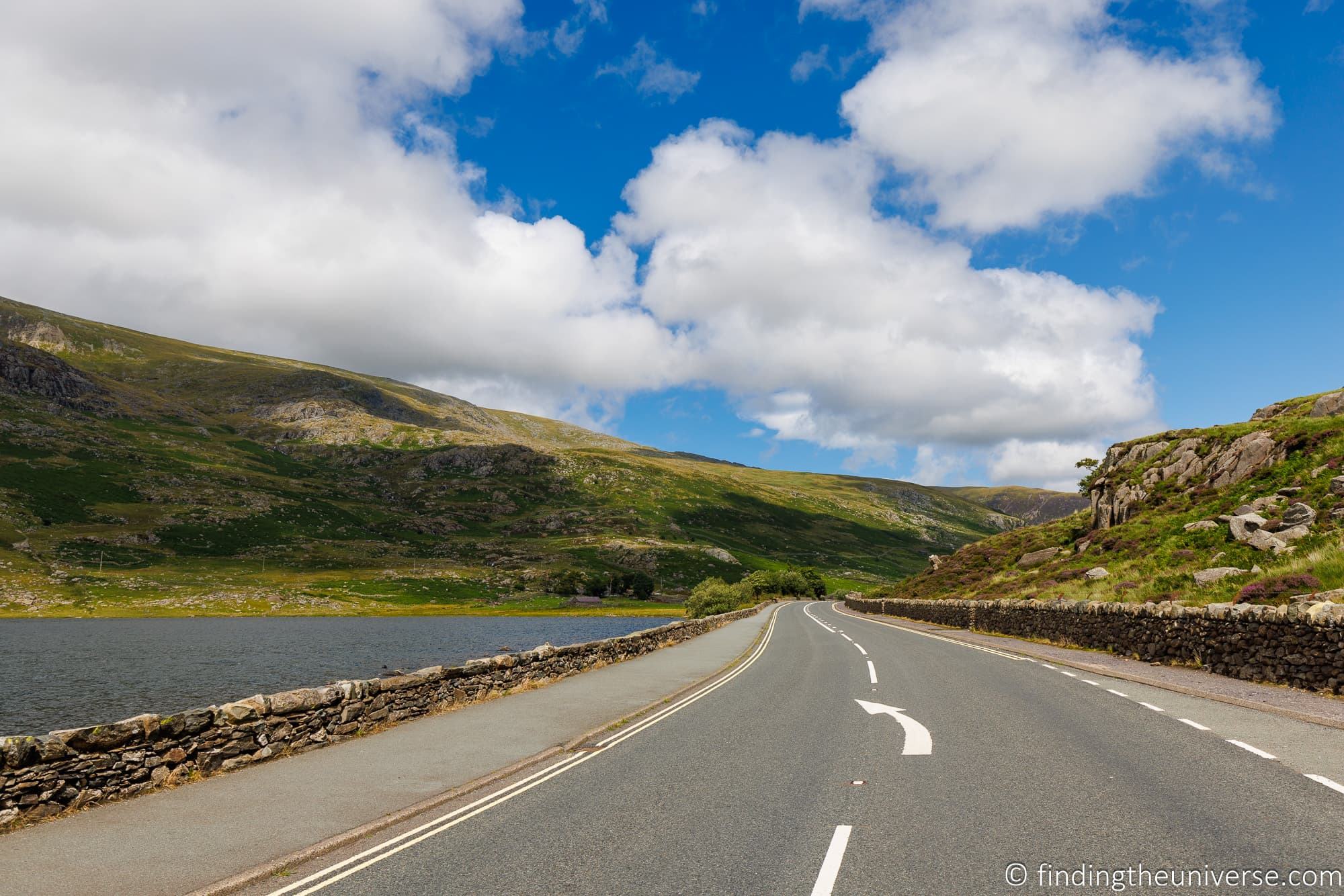

Public Transporation in Wales
Wales has a pretty good public transport network, with both buses and trains which link many of the towns and cities across the country. You can see the main transport routes on the Transport for Wales website here.
For travel planning by public transport in Wales (and the UK in general), we recommend and use the Traveline website. It’s a free service provided by a partnership of public transport operators in the UK, and will help you plan your travel between pretty much any two points in the country.
For the majority of public transport in Wales and the UK (especially on longer distance routes) you will get better prices if you book online in advance. We recommend the trainline website for train and bus booking, we’ve used them for years for our public transport needs in the UK.
Other options to consider, especially for long distance bus journeys include National Express and Megabus.
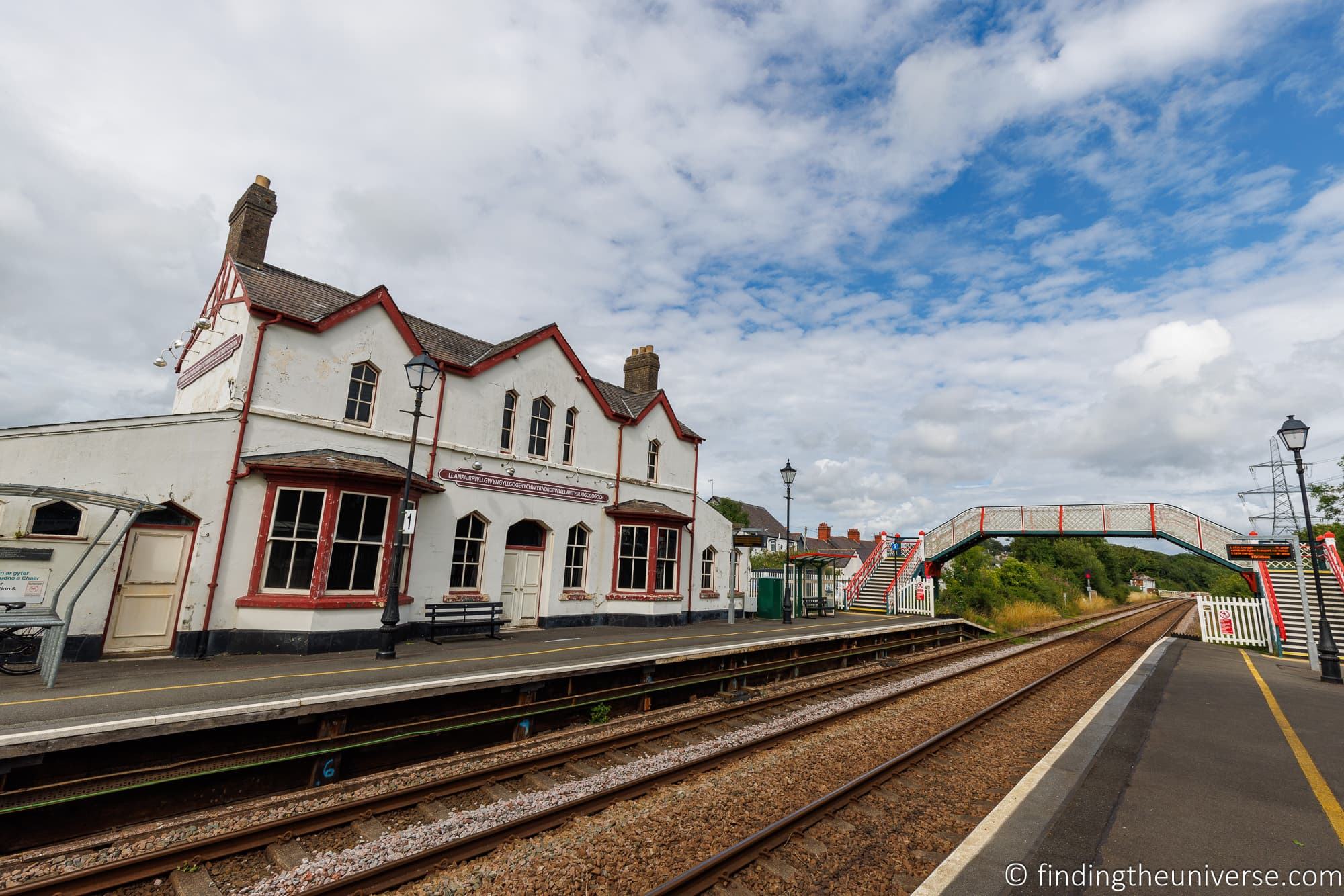

Electricity in Wales
Wales uses the same power system as the rest of the UK. It’s a 220v system which uses a three-pin plug (plug type G).
Travellers from most of the rest of the world, including mainland Europe and the United States will need an adapter like this.
American travellers will also want to check their equipment supports the 220v standard, as the U.S. uses a 110v standard. The voltage a device supports will be written clearly on the power adapter, usually in the form of 110v – 240v.
In our experience most modern laptops, phone and camera chargers, and other small electronics are universal, whilst larger devices like hair dryers and hair straighteners are not.
See more on travel adapters and how to choose one for your trip in our guide to the best travel adapters.
Currency in Wales
Wales uses the same currency as the rest of the UK, namely Pound Sterling, or GBP (Great British Pounds). Wales uses the bank notes issued by the Bank of England, so the currency in use in Wales looks exactly the same as that used in England.
Note that this is different to Scotland and Northern Ireland, where bank notes are issued by Scottish and Irish banks respectively. These bank notes can also be used in the rest of the UK (and Bank of England notes can be used in Scotland and Northern Ireland).
Time Zone in Wales
Wales is on the same time zone as the rest of the UK, which is either GMT, or GMT+1, also known as British Summer Time (BST).
BST runs from the last Sunday in March through to the last Sunday in October.
Best Times to Visit Wales
You might be wondering when the best time to visit Wales is. Whilst Wales is a year-round destination, there are certainly advantages and disadvantages to visiting at different times of year.
Best for Weather
Wales has a relatively mild climate year-round without tremendous extremes.
If you want warmer weather and longer hours of daylight for sightseeing, then the best time of year to visit is going to be from late May through to mid-September.
This time of year will give you the best chance of good weather and sunny days, although note that rain and cooler temperatures are possible year-round.
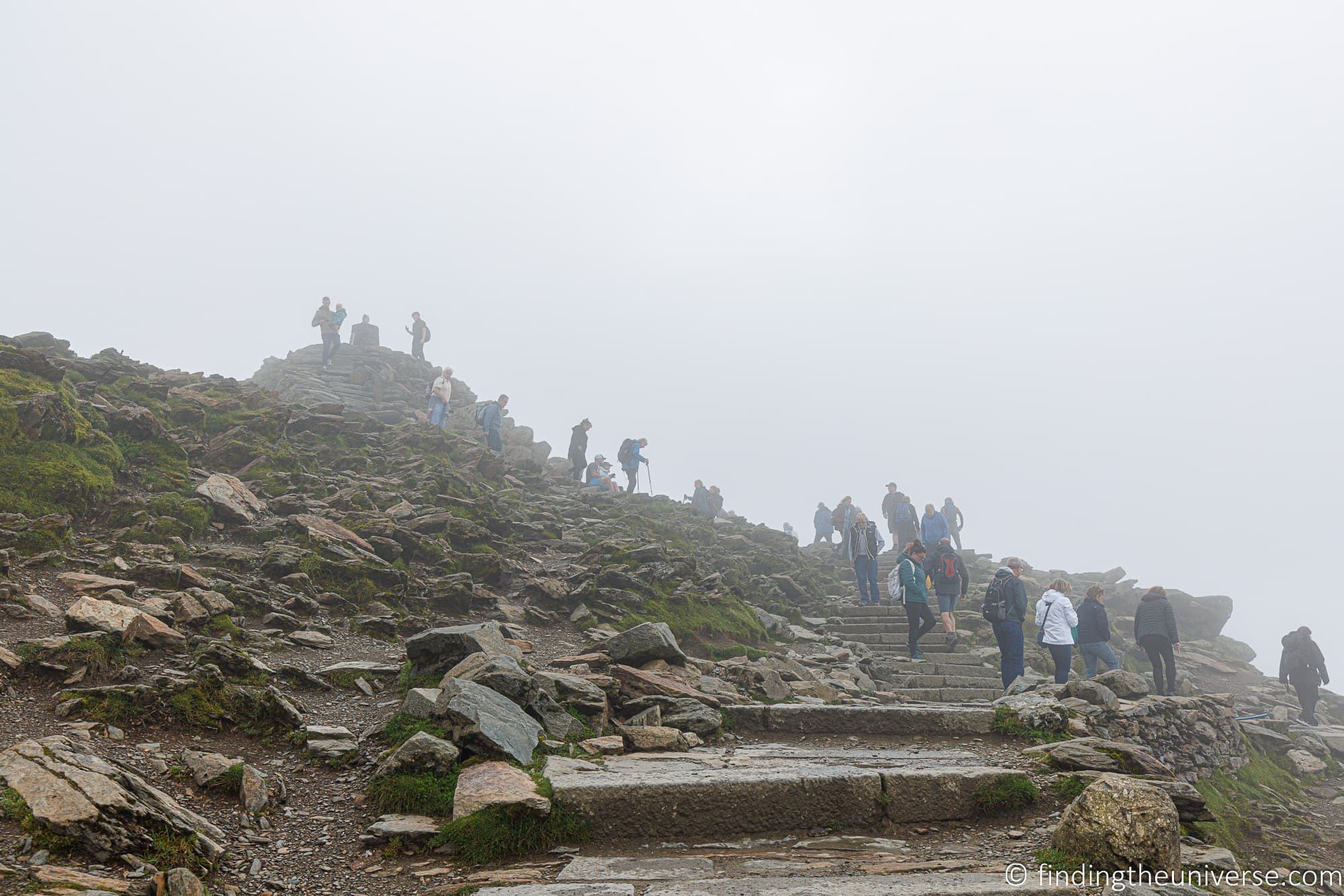

The summit of Snowdon in summer – good weather not guaranteed!
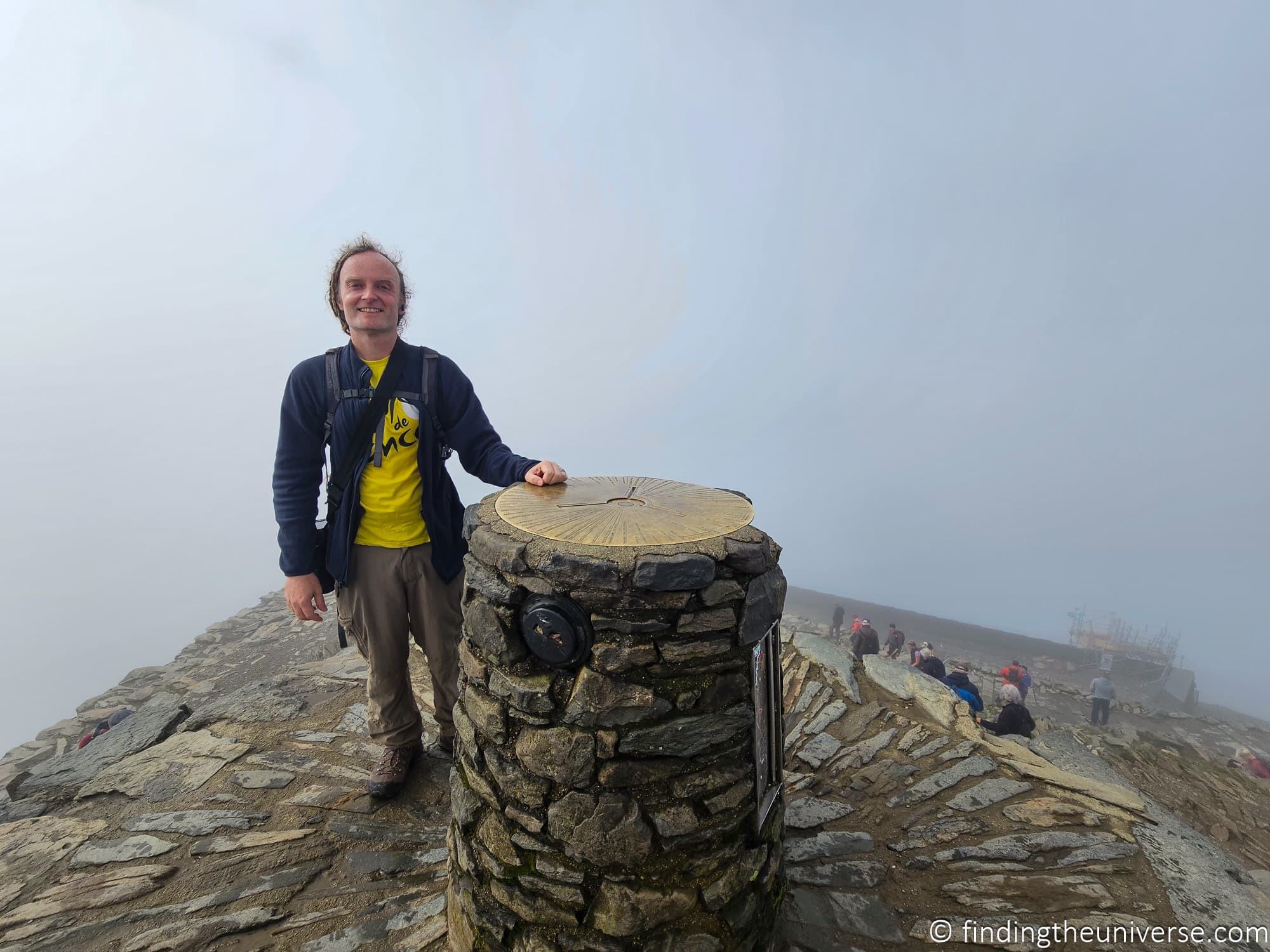

Avoiding Crowds
Wales is a popular destination, especially for visitors from other regions of the UK. There are a number of big English cities near Wales such as Birmingham, Liverpool, Bristol, and Manchester, and visitors from these cities regularly take trips to Wales. It is an especially popular destination for families.
As a result, the busiest time of year in Wales is generally going to be over the school holidays (school breaks) in England and Wales.
The exact timing of school holidays varies a little by area, but generally there are major holidays over the Easter period, and over the summer months from mid-July through to the end of August.
There are also “half-term” holidays which occur halfway through each school term and are generally a week in duration. There is normally one in mid-February, one around the end of May and one around the end of October.
The most popular time for people to visit Wales is during the warmer summer months, and during school holidays, especially the Easter holidays, spring half-term, and summer holidays.
As a result, if you want to visit Wales when it is likely to be quieter then you would be best served avoiding these times.
If you still want good weather, we’d suggest June or September to be optimal months, although April and May can offer good weather if you have a bit of luck on your side!
Best for Hiking / Climbing Snowdon (Yr Wyddfa)
Whilst you can hike in Wales at any time of year, we would suggest that the best times for hiking are going to be similar to that for visiting for the best weather. So that is going to be from late May to mid-September.
Whatever time of year you plan to go hiking though, be aware that the weather can change very quickly. So you will want to be prepared, ensure someone knows your route and where you are going, and pack appropriately. For more information, this safety guide is very helpful.
The most popular hike in Wales by far is the hike up Snowdon (Yr Wyddfa in Welsh). You can both hike and take a train to the summit, both of which are popular options.
In our experience, Snowdon can be busy year round, but the warmer summer months are definitely the most popular time to tackle the hike.
If you want to avoid the crowds on the hike itself, then we’d suggest avoiding the Llanberis path which tends to be the most popular, and taking one of the other less popular routes such as the Snowdon Ranger path or the Rhyd Ddu path.
Of course, Wales has a great many more mountains you can hike, the majority of which are far less busy and popular than Snowdon. A personal favourite is Cader Idris, which also offers spectacular views across the Snowdonia National Park, and attracts a fraction of the visitors!
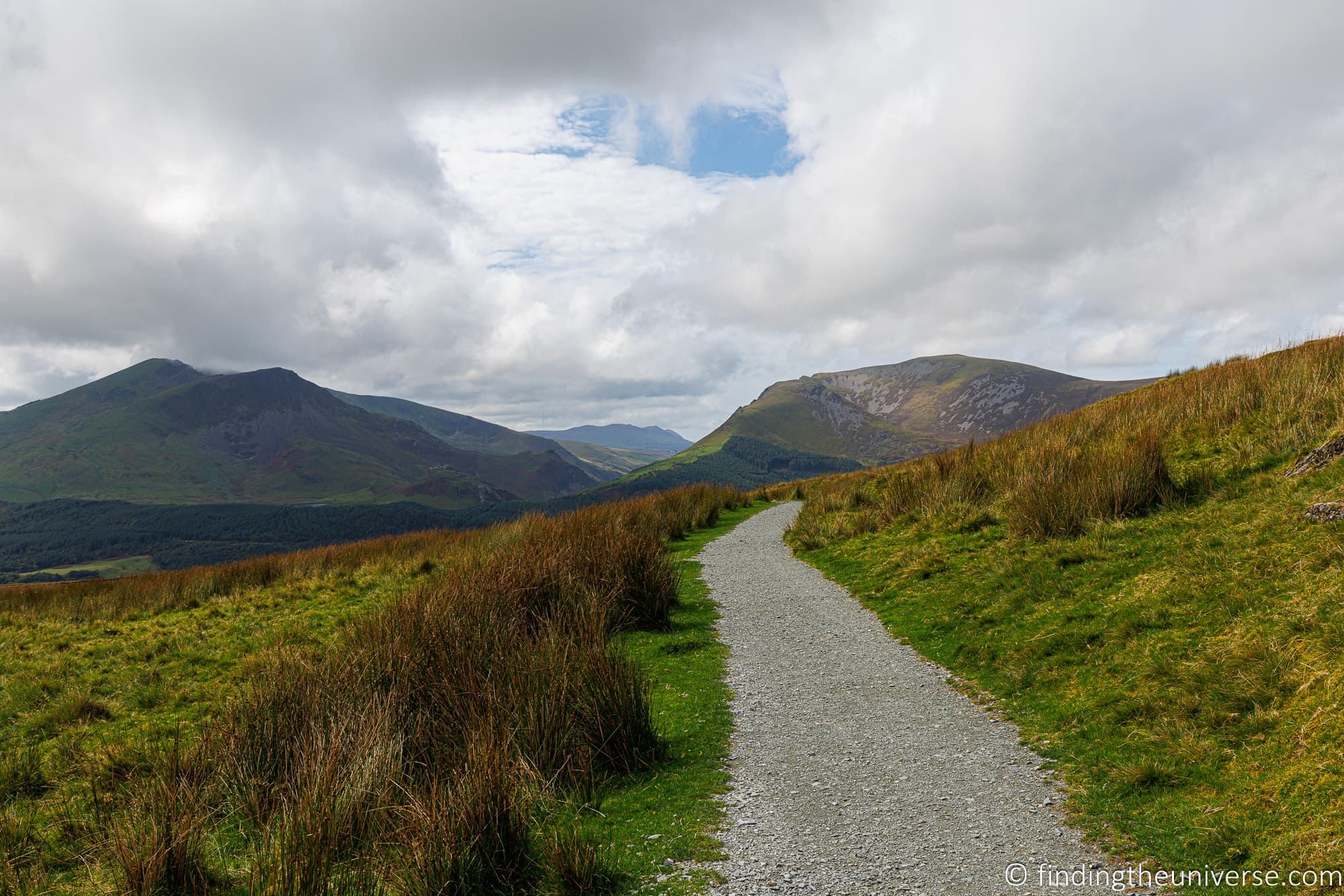

Major Festivals in Wales
Wales plays host to a number of festivals and fairs throughout the year, including music festivals, food festivals, literary festivals, craft fairs, art festivals, and more (see a fairly comprehensive list of festivals in Wales here).
The largest festival in Wales is normally the National Eisteddfod of Wales, which is held for around a week on the first week of August each year. The location for the festival changes each year, and it normally attracts upwards of 100,000 visitors. The festival celebrates Welsh culture, with the events and activities all taking place in Welsh.
If you plan on visiting the Eisteddfodd (or any other festival in Wales), you will definitely want to plan well ahead as accommodation can book out, and the area where the event is being held is likely to be much busier than usual.
Conversely, it’s worth being aware when and where festivals are being held even if you don’t plan on attending them, so you don’t get caught up in the crowds!
How Long to Spend in Wales
As should hopefully be obvious by now, although Wales is a relatively small country, there is a huge amount to see and do in Wales. You could easily spend many weeks exploring the country without running out of things to see and do.
Our recommendation would be to spend at least a week if possible to get a good idea of what is on offer and to have time to explore some of the country’s highlights.
If you have less time, say three to five days, then we would recommend focusing on one area or region of the country rather than trying to cover too much ground.
So, for example, with three days you might want to focus on visiting Cardiff and south-west Wales or explore part of north Wales with visits to Caernarfon and Snowdonia National Park.
If you have a week or more, then you can expand your itinerary to cover more of the country.
We will share some suggested itineraries further on in this guide to help you plan, and we also have a 7 – 10 day Wales road trip itinerary you should find helpful. That itinerary can easily be expanded to 2 or more weeks.
Where to Stay in Wales
Wales has a wide range of accommodation options across all budgets. Whether you prefer camping, glamping, self-catered accommodation, family-run guesthouses, country house hotels or regular hotels, you are going to find something to suit.
We have stayed at a huge range of accommodation options across Wales, including apartment rentals, guesthouses, bed and breakfasts and hotels. Usually we prefer to either stay at a locally owned bed and breakfast or small hotel. But for longer stays, we normally book an apartment or cottage.
When looking for accommodation, we recommend a mix of the following sites:
- Booking.com – this is usually our first stop for all sorts of accommodation types, from hotels to guests houses to apartments. We like the powerful filter system that allows us to hone in on exactly what we want in each location, as well as the map tool that lets us see different options in different areas.
- Sykes Holiday Cottages – for longer stays in Wales (and the wider UK) we also use Sykes. They specialize in holiday cottages, and we have stayed at some really lovely properties through their system.
- Vrbo UK – if we are specifically looking for an apartment or vacation rental, we’ll also usually look on Vrbo. They offer a good selection of options and it is nice to have a comparison.
If you would like more options for accommodation booking in Wales and the UK, see our guide to booking holiday homes in the UK for some ideas!
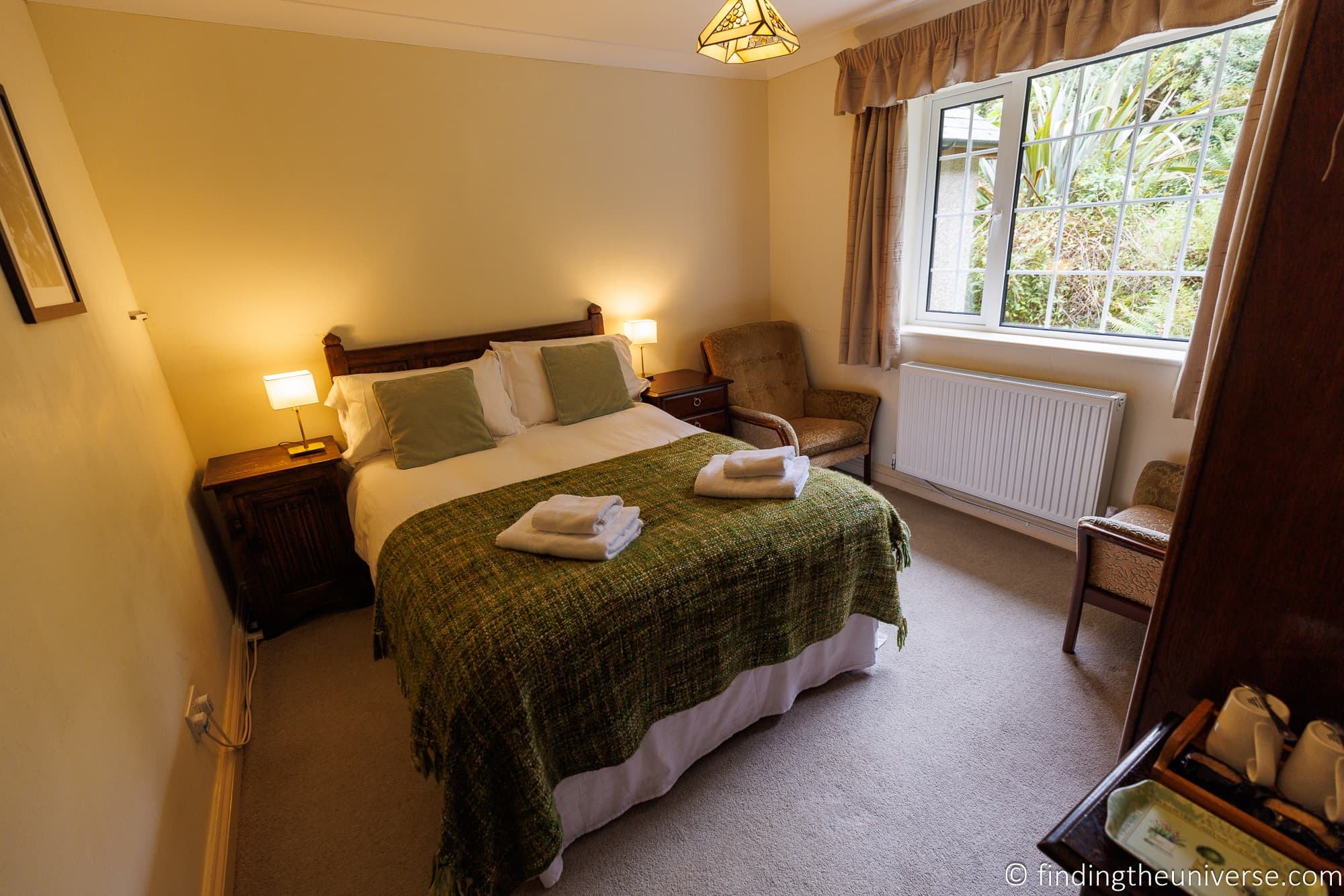

What to Eat in Wales?
You might be wondering what food you should try in Wales when you visit, and if there are any uniquely Welsh dishes. Well, the answer is yes there are.
Whilst there are certainly a lot of similarities between Welsh food and English food, including staples such as fish and chips and the full fried breakfast experience, there are some dishes that are common to Wales. Here are some to try:
- Cawl – one of more traditional Welsh dishes, cawl (pronounced cowl) dates back to the 11th century at least and is essentially a stew made with meat, vegetables, and potatoes.
- Welsh Rarebit – whilst this sounds like it’s going to involve rabbit, this quintessential Welsh dish is actually melted cheese on toast. There are variations on the recipe, with mustard or a bechamel sauce added to the cheese. Delicious however it’s made!
- Glamorgan sausage – this popular “sausage” is a traditional vegetarian sausage primarily made from leeks, cheese, and breadcrumbs. It dates back to at least the 18th century but rose in popularity during World War II due to meat rationing and remains popular today.
- Welsh cakes – this small cake is made from dough, raisins, currant and candied fruit peel and then cooked on a griddle. It can be eaten hot or cold and is texturally more similar to a shortbread than a cake. We like it served hot and eaten with butter!
- Bara brith – this fruit loaf is a popular option to have with afternoon tea and is often served with butter on it. It’s basically a fruit cake filled with raisins, currants and dried candied fruit peel.
- Laverbread – This is a very interesting delicacy, which despite the name, isn’t a bread at all. Instead, it’s a puree made from a specific type of seaweed which grows along the Welsh coastline. The seaweed is cooked for hours to form the puree, which is then most commonly served with bread.
- Welsh cheese – Wales is home to many milk producing animals, including cows, goats, and sheep. As such, there are many traditional Welsh cheeses to enjoy. The most well-known is Caerphilly, which is a hard but crumbly white cheese. Others include Y Fenni, Tintern and Pantysgawn
- Local drinks – Wales produces a wide range of local drinks, including locally brewed beers and ciders. There are also over 20 vineyards in Wales producing Welsh wine, and Welsh whisky is becoming more popular as well!
As well as specific dishes, there are also many foods that Wales is generally known for. These include Welsh lamb and beef, seafood, seaweed, and leeks, the latter of which is actually the national symbol of Wales.
If you are going to be shopping and cooking during your time in Wales, you should have no problem finding some local Welsh produce.
We can also recommend The Welsh House for trying a variety of Welsh foods. They are in a few locations, including in Cardiff near the castle. The last time we visited they had a “Taste of Wales” menu option which let us try a lot of different Welsh dishes for a very reasonable price.
Suffice to say, we don’t think you’re going to go hungry during your stay in Wales.
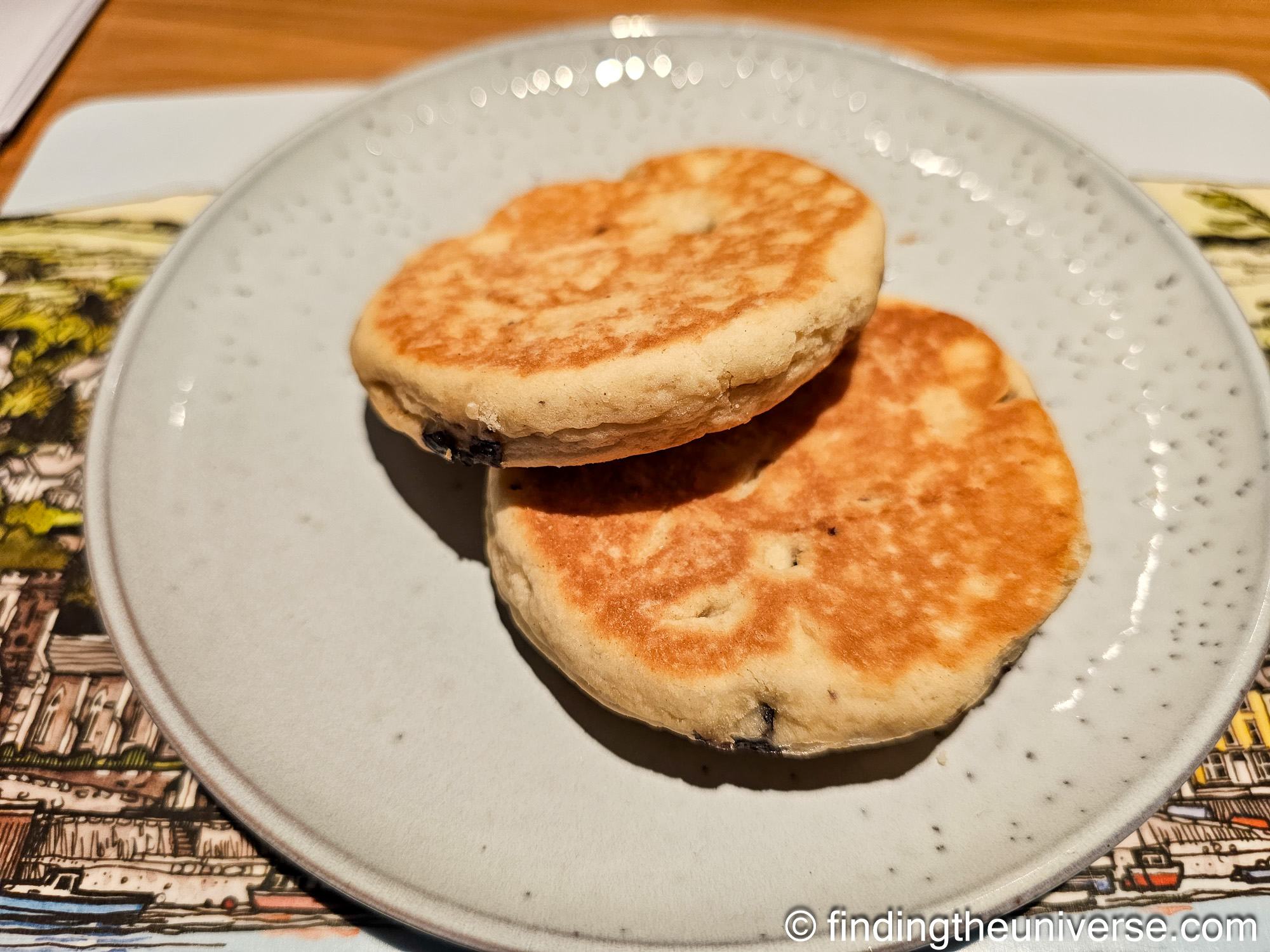



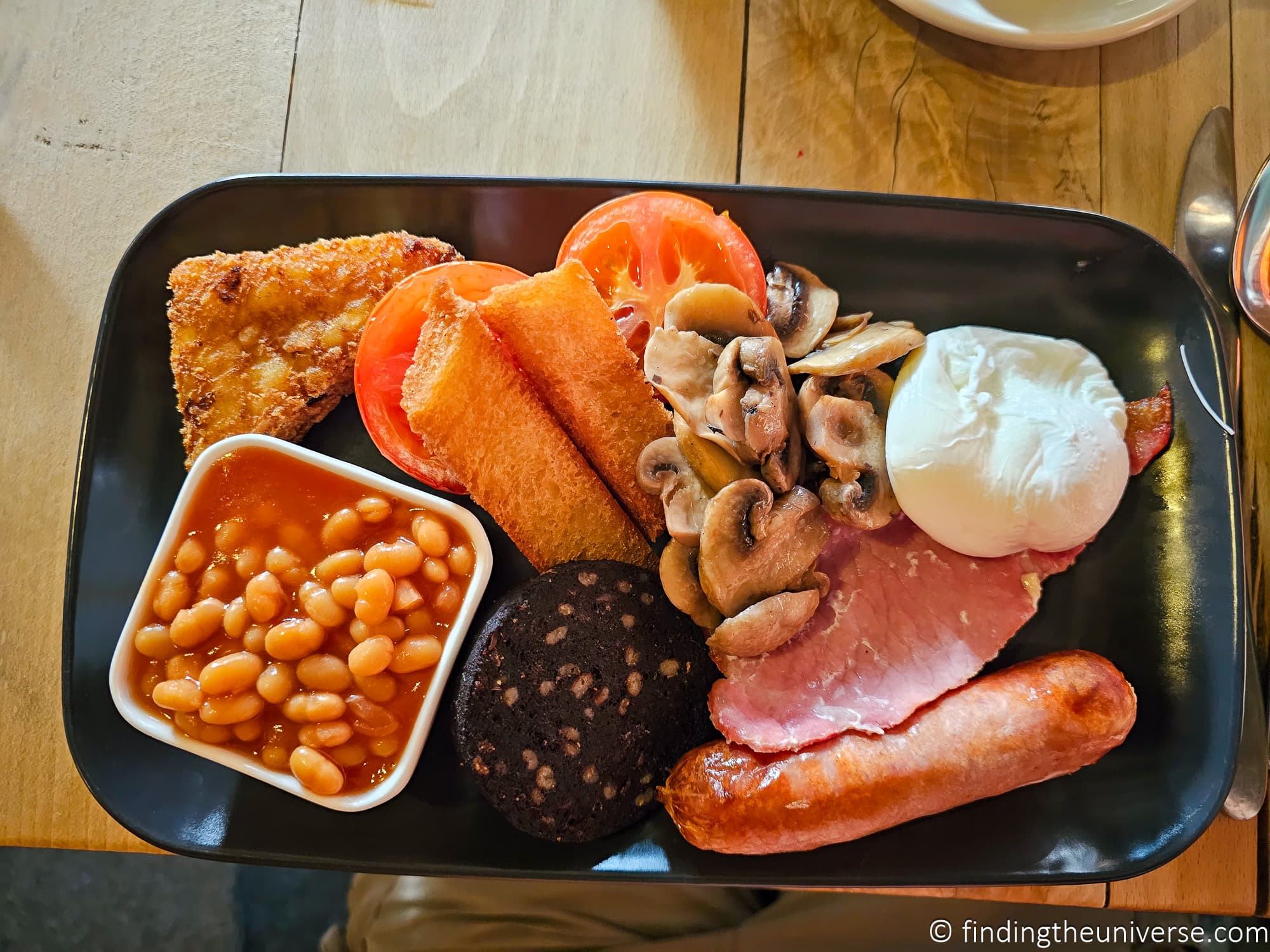



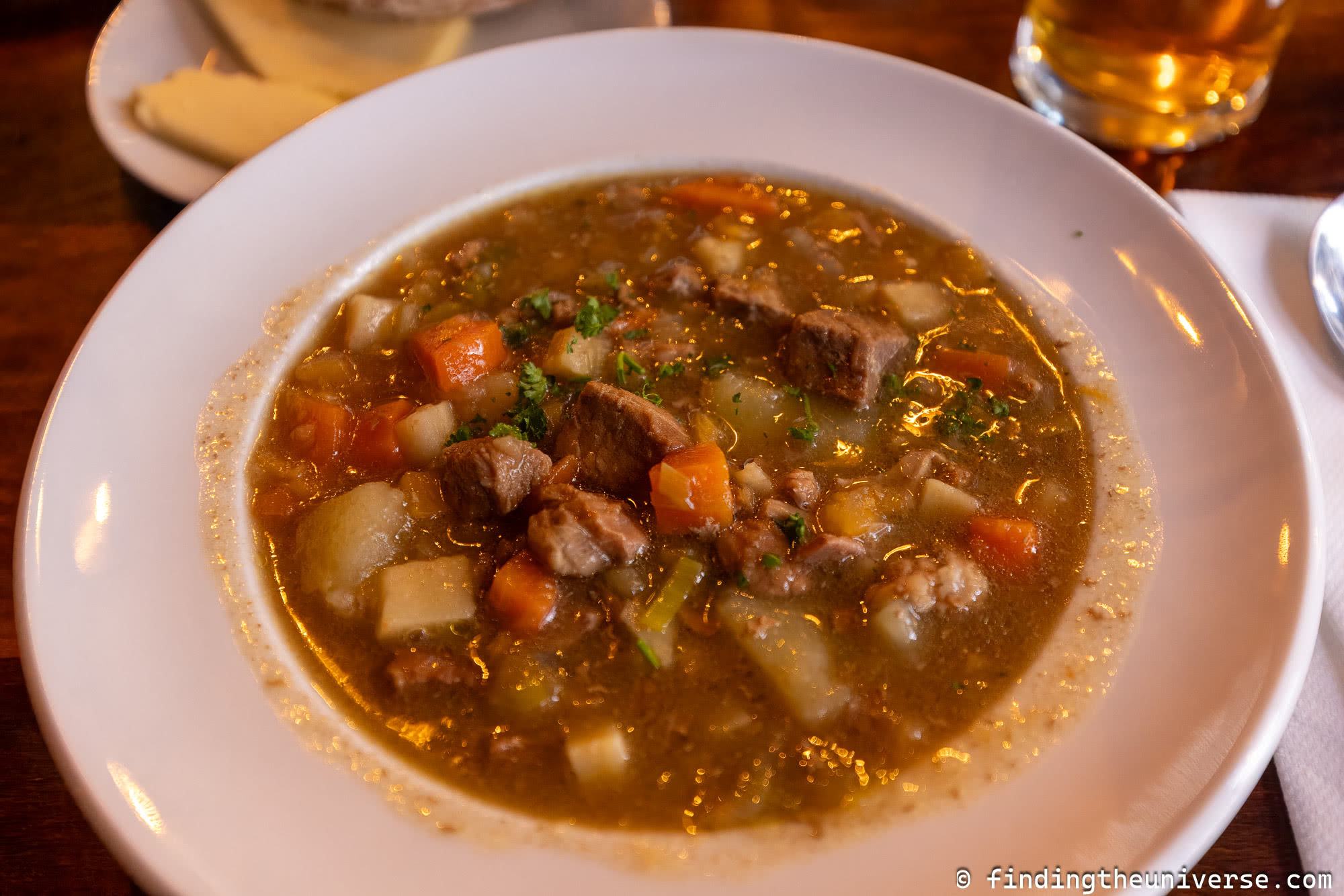

How to get around Wales?
There are quite a few options for getting around Wales, which we’ll go through now.
By Car
Our preferred option for traveling in Wales is to drive ourselves. Wales has a lot of attractions that are a little off the beaten path, and a car makes it a lot easier to reach those tucked away castles or hidden beaches.
That said, you should be aware that the road network in Wales is primarily made up of regular two-lane roads rather than multi-lane freeways (known as motorways in the UK).
As such, journey times can take a bit longer than in other parts of the UK. It is difficult to zip across Wales and journeys may take longer that you expect from just looking at the map.
This isn’t a bad thing, as the scenery is generally lovely, and there are plenty of things to stop and look at anyway. However, you’ll just want to be aware when planning that even if the distances don’t look particularly long, it can take a bit of time to get from place to place.
If you are planning on traveling by car and need to rent, we recommend comparing car rental prices on Discover Cars here. They compare all the main providers so you can get the best price for your trip.
Public Transportation
As mentioned in the section on public transport, Wales has a pretty good public transport network.
The main thing to know if you are planning to travel in Wales by public transport is that you’ll definitely want to plan well in advance. You will also want to be aware that it can take quite a bit of time to get between locations.
I have done a fair bit of travel by train and bus in Wales, and whilst the scenery is always very pretty, it can take a while to get from location to location. So just be aware that if you are on a limited timetable, you will need to plan carefully so as not to spend all your time sitting on a bus or train.
It’s also worth noting that whilst trains and buses connect a lot of the country, they don’t go absolutely everywhere. So if there is somewhere you really want to see, do check to ensure you can actually get there by the mode of transport you wish to use.
Overall, whilst you can definitely get around Wales by public transport, for folks on a limited timeframe who want to see a lot, we would probably recommend either driving or taking a tour.


Easiest Places to visit in Wales by public transport?
If you are planning on visiting Wales by public transport, you might be wondering what the best locations are for doing so. Here are some tips.
First, we’d suggest focusing on a specific region of Wales if you plan on visiting by public transport, as then you’ll be able to spend more time sightseeing and less time traveling.
Cardiff is a very well-connected city, and then from here you could easily explore along the south coast to Tenby and even St. David’s.
Alternatively, if you’d prefer to explore more of the mountains, then head to North Wales. I’d recommend taking the train line along the north coast from the English city of Chester (or Liverpool), which connects to a number of other train and bus routes.
This will allow you to explore many highlights of the region, including Conwy, Bangor, Caernarfon, the Snowdonia National Park, as well as the northeast coastline including Harlech and Barmouth.
You could easily make a loop through North Wales by public transport, going into Wales from Chester across to Conwy and Bangor, then heading south down the coast to Barmouth and Aberdovey, and then finally east through Machynlleth to Shrewsbury.
This route will let you explore castles, see coastline and experience the mountains, all without needing a car.
Join a Tour
One of the best way to see Wales in our opinion, especially if you prefer not to drive, is to join a tour. A tour lets someone else handle all the logistics, from planning what to see and do to how to get from place to place.
You do lose a bit of flexibility when taking a tour of course, as they generally follow a fixed itinerary. This is particularly the case if you join a group tour. A private tour will normally offer a lot more customization, with the downside that they tend to be more expensive.
That said, in our experience most group tours focus on the highlights that visitors want to see anyway. Just be sure when choosing a tour to ensure it visits the majority of sights and attractions you really want to see in Wales.
We have some recommended tours of Wales in the section of this guide on recommended tours. You can also see a range of tours by various providers at different price points and durations on TourRadar here.
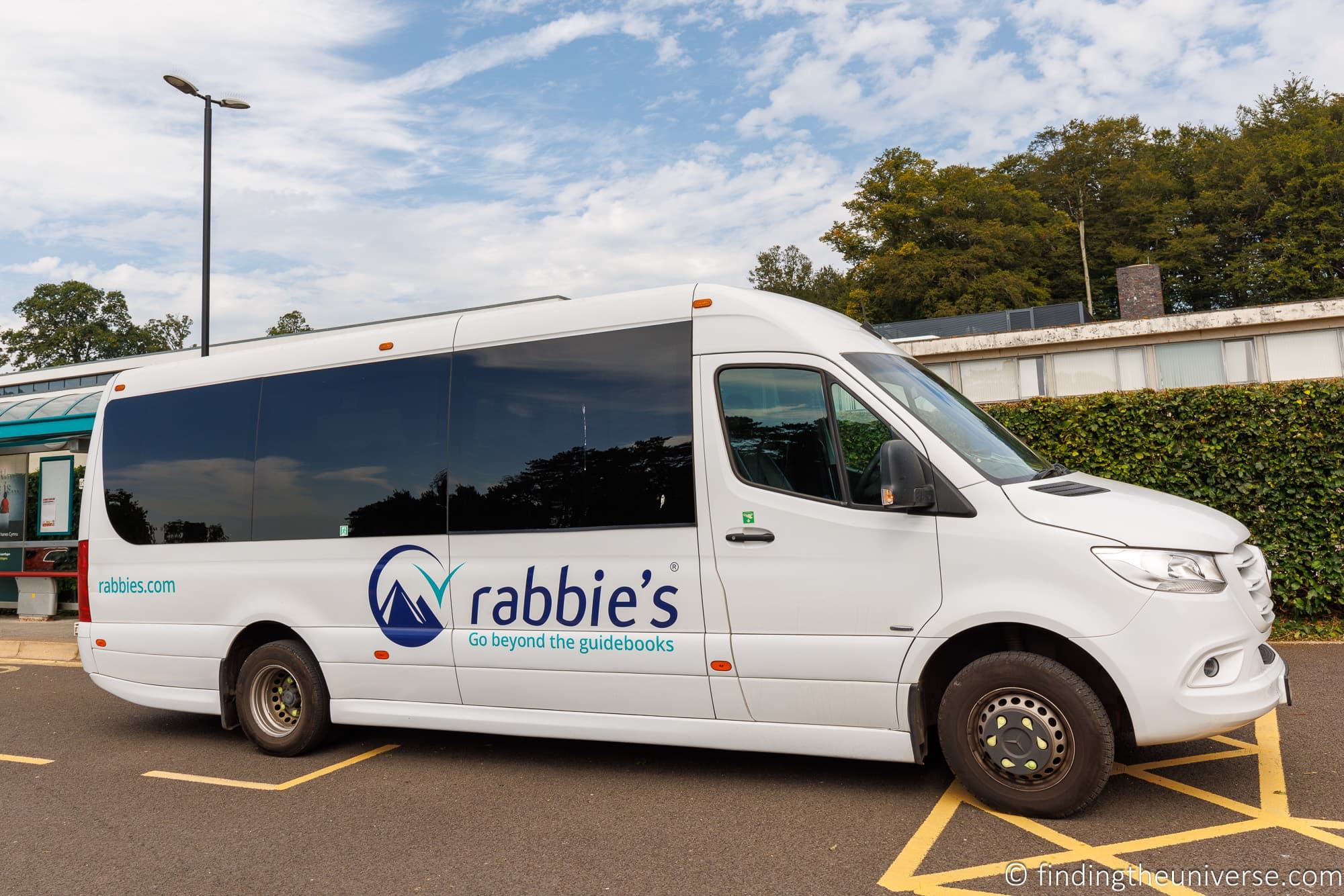

Best Guided Tours of Wales
A great way to see the highlights of Wales without having to worry about the logistics of planning transport and accommodation is to take a guided tour.
There are a number of tours to choose from that visit Wales, of varying duration and price.
The longer Wales tours generally depart from London, Bristol, or Cardiff.
Some we suggest are as follows:
- This 5 day road trip with Rabbies would be our first pick of available small group tours of Wales. We’ve taken a great many tours with Rabbies and we love their knowledgeable driver guides and small group sizes. This tour departs from London and covers many of the highlights of the country, from Snowdonia down to south west Wales.
- This 8 day tour from Cardiff follows a similar route to our own suggested Wales road trip itinerary. This tour includes time in Cardiff, the Brecon Beacons mountains, Snowdonia National Park, Conwy Castle, St. Davids, Tenby, and the Pembrokeshire Coast National Park.
- If you have less time to spare, then this 3 day tour with Rabbies departs from Bristol and focuses on the highlights of south Wales, including Carreg Cennen Castle, Hay on Wye, St. Davids, Tenby, and the Pembrokeshire Coast National Park.
- This is another 3 day tour with Rabbies which departs from Bristol and focuses on the highlights of North Wales. It includes Snowdonia National Parks, Conwy Castle, Harlech Castle, the Slate Museum, and Portmeirion.
There are of course more tours to choose from in Wales. See this selection from a range of operators on TourRadar which will let you sort and filter by duration, places visited and price.
Highlights in Wales
There’s a lot to see in Wales, enough to fill many weeks of explorations. As it can be hard to figure out what to see, we wanted to share some of our personal highlights in the country. This is by no means an exhaustive list, but we do think it covers a lot of what the country has to offer.
We’ve divided it roughly into attractions in the southern half of Wales (basically everything south of around Aberystwyth) and the northern half of Wales (everything north of Aberystwyth).
We think this makes sense because if you are on a shorter timetable you will want to focus on a more manageable area.
If you are lucky enough to have more time then you can definitely visit the whole country!


South Wales Highlights
South Wales has a lot to offer, from the cultural attractions in and around the capital city, through to the stunning landscapes of the Pembrokeshire National Park where you will find ample hiking and wildlife viewing opportunities.
This part of Wales is also home to ancient burial grounds, beautiful churches, castles, beaches, and more!
Here are some highlights to consider adding to your Wales itinerary.
- Cardiff Castle
- Cardiff Museum
- St. Fagans (National Museum of History)
- Castell Carreg Cennen
- Caerphilly Castle
- Tenby
- Freshwater Beach
- Whitesands Beach
- St. David’s Cathedral
- Hiking in Pembrokeshire Coast National Park
- Pentre Ifan Burial Chamber
- Amgueddfa Ceredigion Museum, Aberystwyth
- Elan Valley
- Brecon Beacons
- Hay on Wye
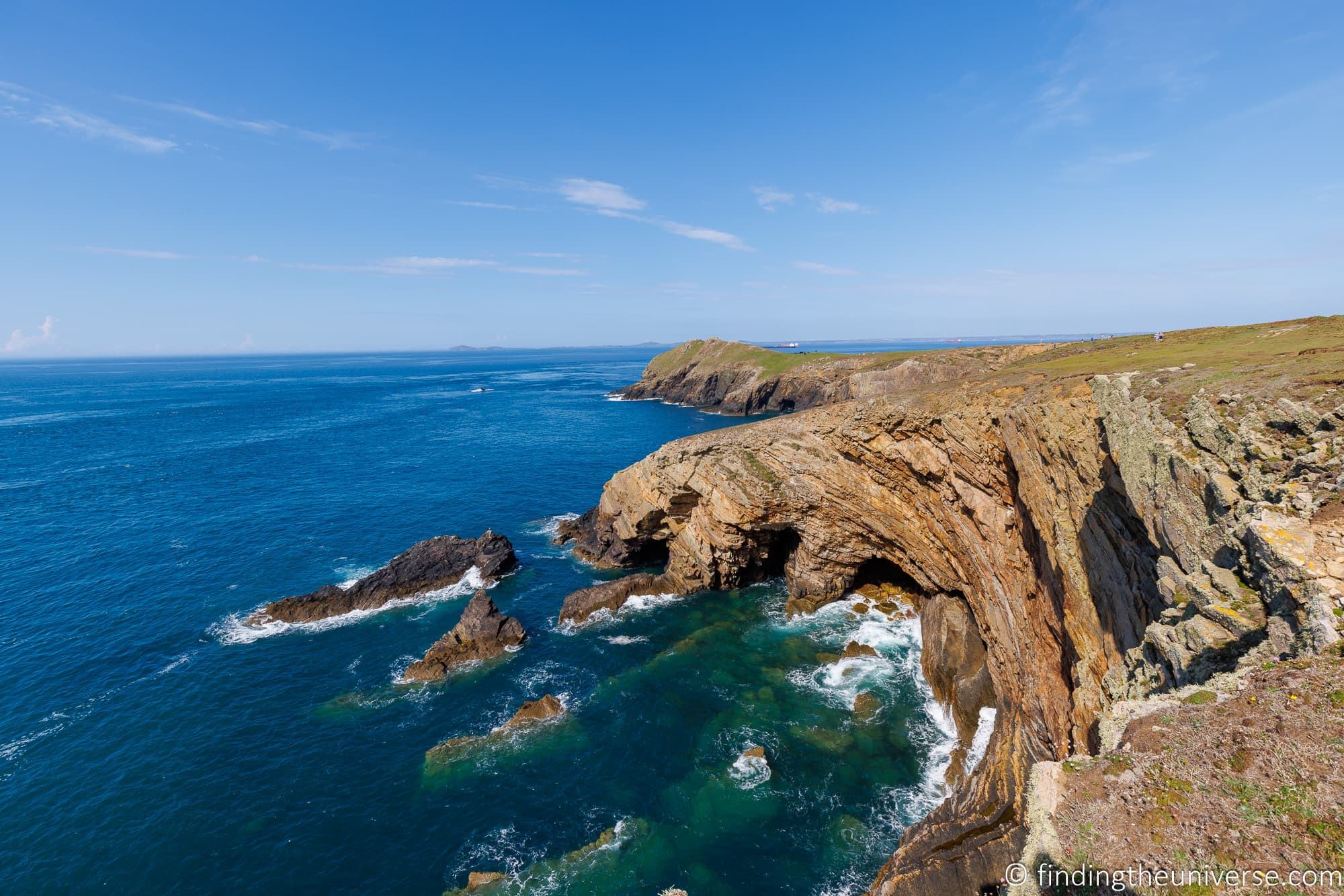

North Wales Highlights
North Wales is perhaps best known as being how to the spectacular Snowdonia National Park, which is fair enough as it is a truly beautiful part of the world.
However, there’s lots more to this region of the country, from epic castles through to heritage steam railways and wonderful beaches.
Here are a few highlights to consider adding to your itinerary for Wales!
- Ffestiniog & Welsh Highland Railways
- Caernarfon Castle
- Beaumaris Castle
- Conwy Castle
- Harlech Castle
- Mount Snowdon & Snowdonia National Park
- National Slate Museum
- Bird Watching in the Dyfi Valley & Coast
- Centre for Alternative Technology
- Barmouth Beach
- Aber Falls
- Portmeirion
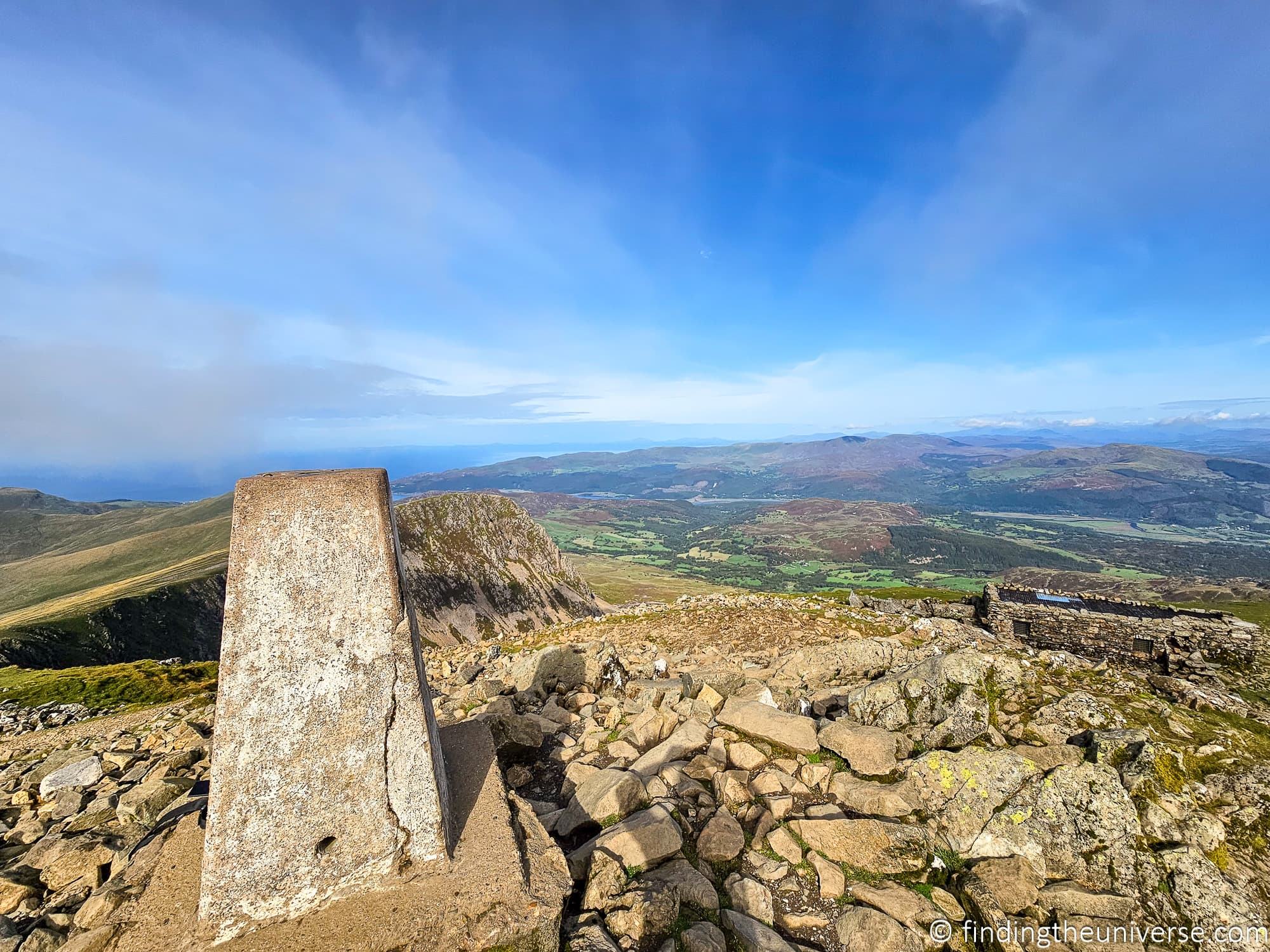

Suggested Itineraries for Wales
There is a lot to see in Wales! We wanted to share some suggested itineraries for visiting the country for different durations, so you can make the most of your visit.
Of course, your mode of transport will dictate exactly how far you are able to go and what you are able to see. If you are relying on public transport, we’d definitely recommend focusing on a smaller area so you can spend more time seeing sights and less time traveling.
If you are on a tour or in your own vehicle, you will likely be able to fit more in.
1 – 3 Day Wales Itineraries
With one to three days in Wales we would highly recommend focusing on a specific area of the country, such as an area of south Wales or north Wales.
For example, for south Wales you might consider spending a day in Cardiff and then a day or two exploring the Pembrokeshire Coast National Park, overnighting in St. David’s or the pretty coastal village of Tenby.
Another option would be to focus on the mountains and castles of north Wales.
Basing yourself in Caernarfon for example would put you in easy reach of some of the most spectacular castles in Wales, as well as the hike or train ride up Snowdon. You could easily spend a wonderful one to three days visiting castles, exploring beaches and hiking in the mountains of Snowdonia.
3 – 6 Day Wales Itineraries
With three to six days you would be able to more thoroughly explore a region of Wales.
Again, we wouldn’t necessarily recommend trying to see the whole country in this time period as it might feel a bit rushed. Instead, focus on a particular area and hone in on some of the attractions you are interested in.
For example, if you want to experience culture and coastal scenery, then we’d suggest starting in Cardiff, working your way along the south coast, and then heading up towards Aberystwyth.
Along the way you’ll be able to visit cultural attractions, experience beautiful coastal walks and take in a number of castles.
Alternatively, head up to north Wales. With a bit more time you can explore more of this beautiful part of the world, from the peaks of the Snowdonia National Park to the UNESCO listed castles to the heritage steam railway lines.
We’d suggest basing yourself in two or three locations, such as Caernarfon, Porthmadog, Conwy, or Barmouth, and exploring from there.
6 Day+ Wales Itineraries
With more than six days in Wales, you would be able to explore from top to bottom if you so wished. We’d suggest a loop along the coast, starting in Cardiff, heading out to the Pembrokeshire Coast National Park, then all the way up to Snowdonia National Park and north Wales.
We have a suggested 1 week Wales itinerary (can be adjusted to 10+ days) for doing just that with lots of detailed information, which we think you’ll find helps you get around.
What to Pack for Wales
Wales, like the rest of the UK, is a country where the weather can be highly variable. Rain is possible at any time of year, as are cooler temperatures.
So when you plan what to pack for your trip to Wales you will want to be prepared for a variety of scenarios. Additionally, as a lot of the activities in Wales involve time spent outdoors and particularly hiking, you’ll want to plan and pack accordingly to ensure you are prepared.
We would recommend reading our guide to what to pack for the UK as a general overview, but also to remember the following items:
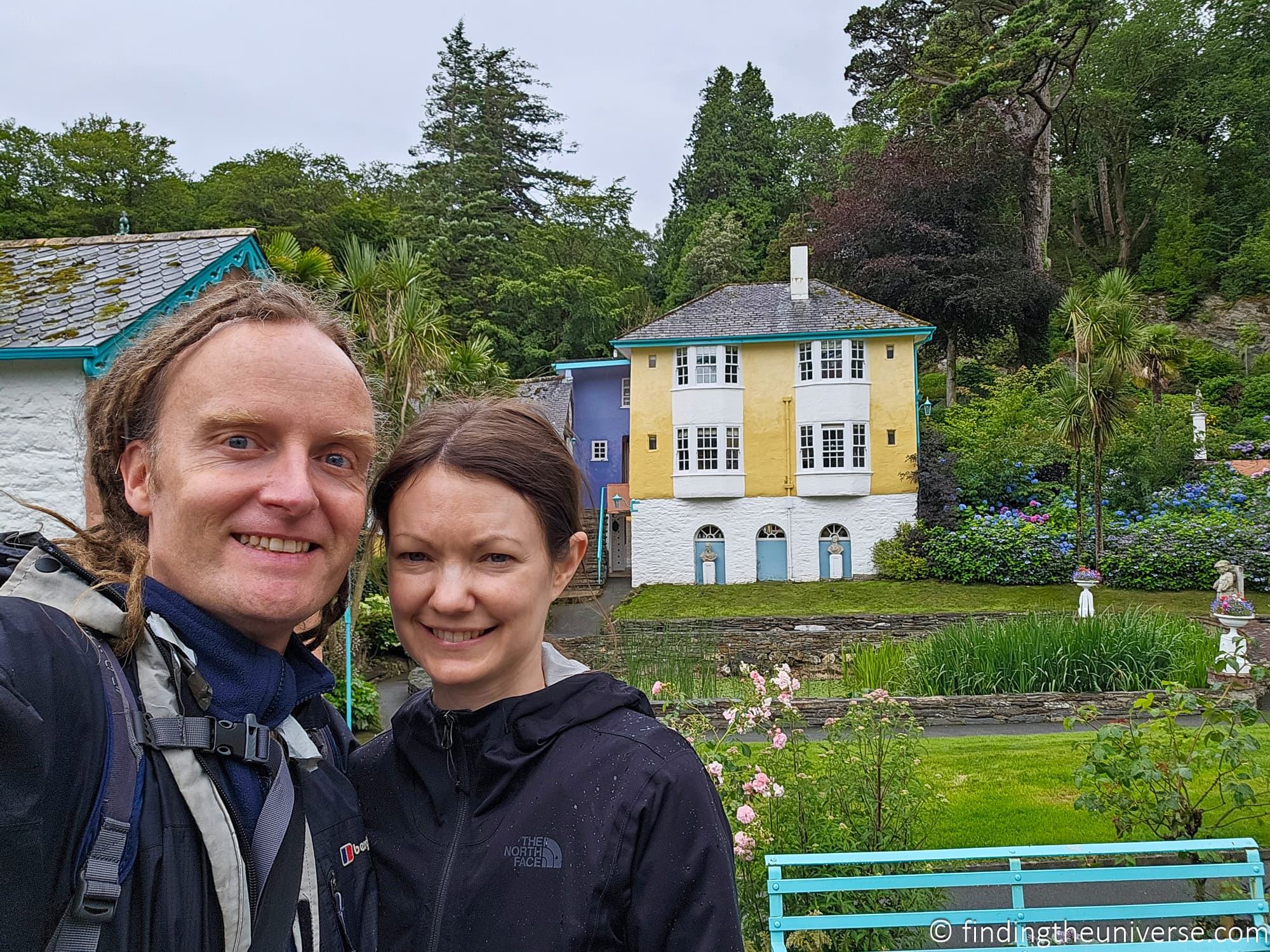

Further Resources for Visiting Wales and the UK
And that’s it for our detailed planning guide for visiting Wales! We hope you found this guide useful. We also wanted to share some more resources we think might help you with planning this and future trips in the UK.
- We have a detailed 7 – 10 day road trip itinerary for Wales, with day by day highlights, tips on where to stay, and lots more.
- If you’re looking for more road trip inspiration in the UK, we have a two week UK road trip itinerary and a one week UK road trip itinerary. We also have a one week Cornwall itinerary
- If you’re heading to Scotland, check out our 2 day Edinburgh itinerary, our Glasgow and Loch Lomond itinerary, our guide to the best day trips from Glasgow, our guide to things to do in Edinburgh, our itinerary for Skye and the Highlands, our guide to the best day trips from Aberdeen, and our guide to the best day trips from Edinburgh. We also have a North Coast 500 planning guide and North Coast 500 seven day itinerary
- If you’re not familiar with driving in the UK, see my guide to driving in the UK for helpful tips.
- We have guides to many cities in the UK you can check out! See our guides to things to do in Manchester, things to do in Stratford upon Avon, things to do in Bristol, things to do in Portsmouth, tips on a weekend in York, tips on Visiting Oxford on a Day Trip, and things to do in Cambridge to get started
- If you’re looking for a guidebook for your trip, check out the Rough Guide to Wales
And that’s it! Have you ever visited Wales? Do you have anything you’d add to the above? Just let us know in the comments below, and safe travels!
